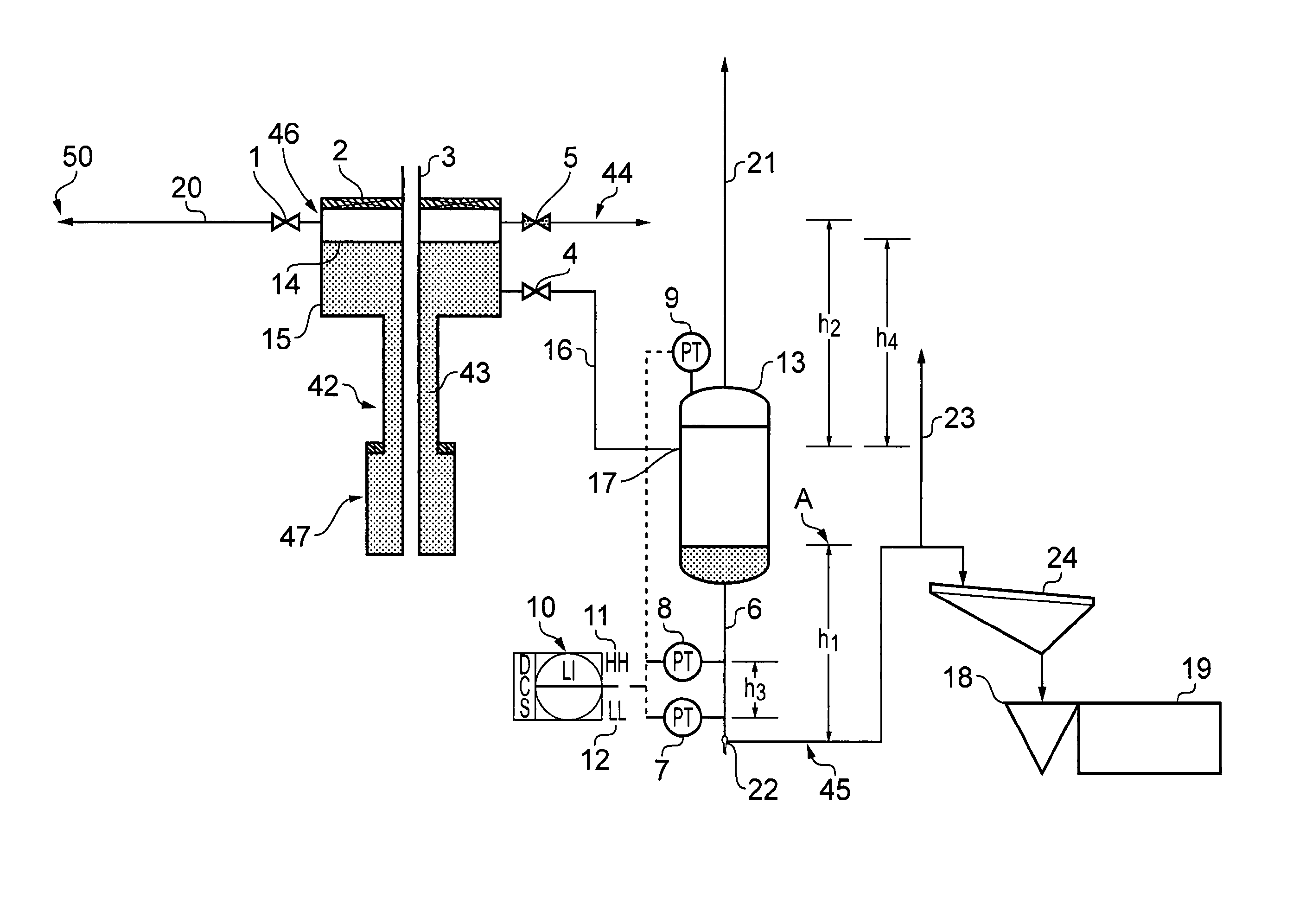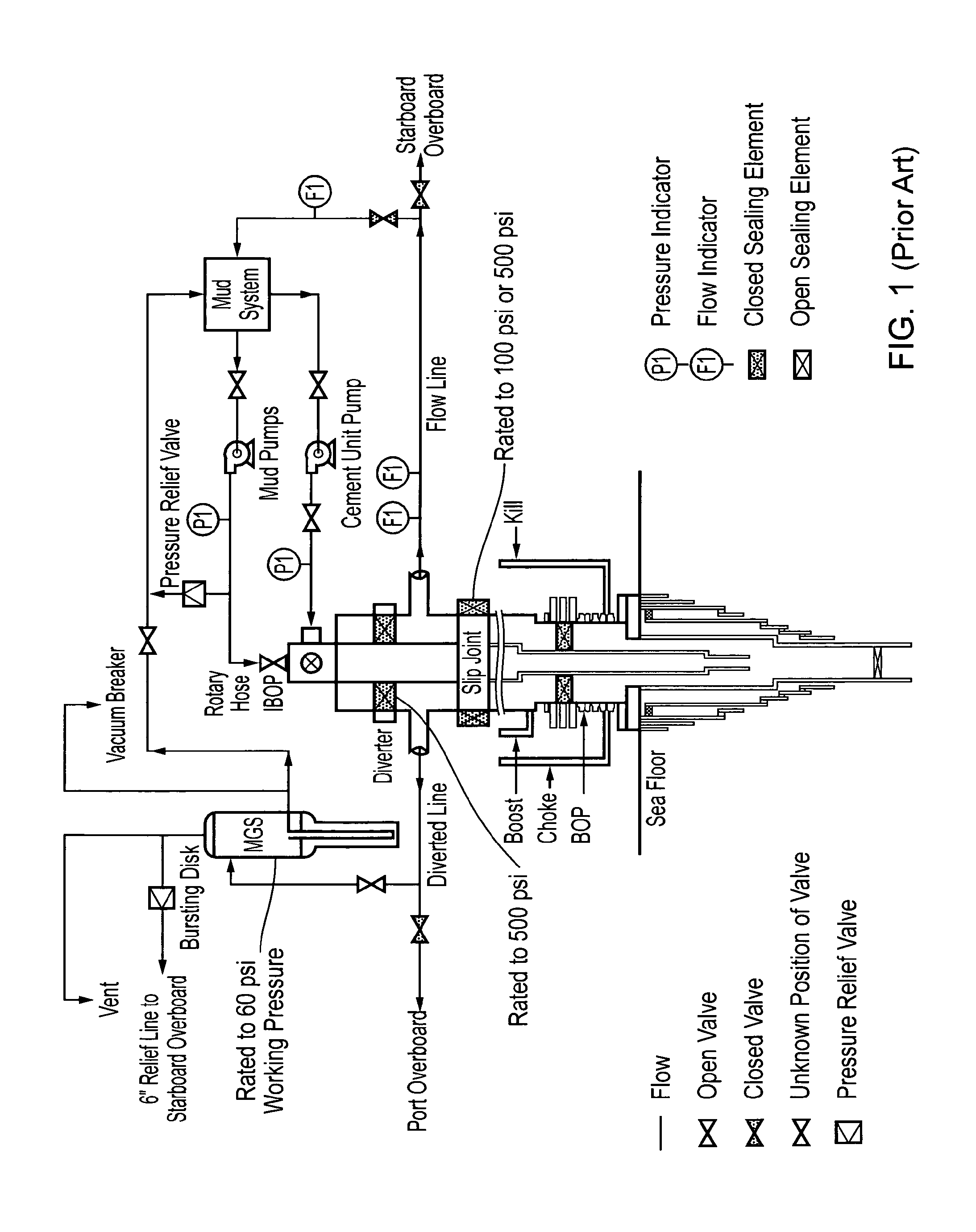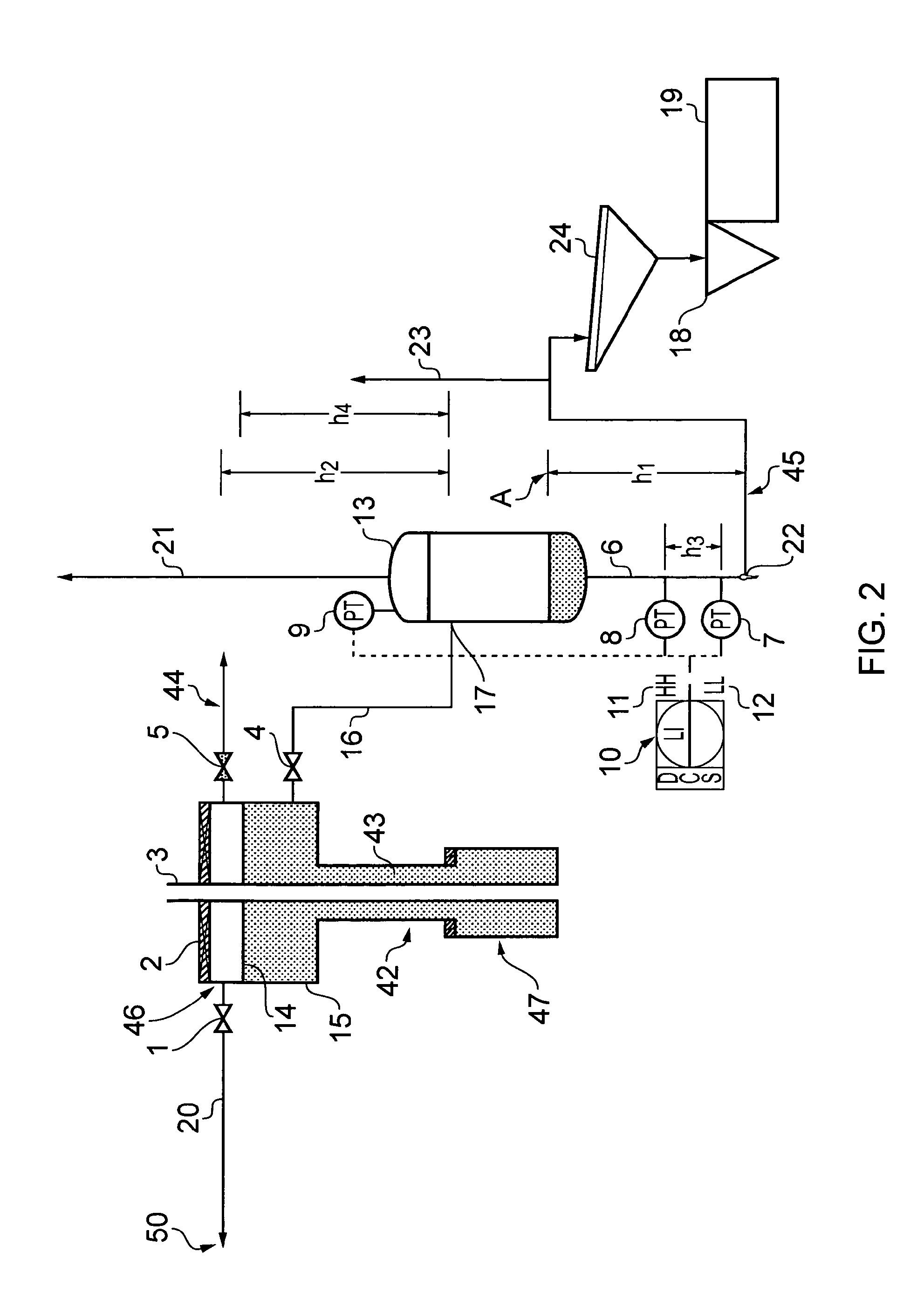Fluid diverter system for a drilling facility
a technology of flue gas diverter and well, which is applied in the direction of drilling, borehole/well accessories, construction, etc., can solve the problems of more difficult for drillers to detect a kick early, gas may inadvertently enter the riser, and design should not allow the diverter to completely shut-in the well
- Summary
- Abstract
- Description
- Claims
- Application Information
AI Technical Summary
Benefits of technology
Problems solved by technology
Method used
Image
Examples
Embodiment Construction
[0030]A drill string 3 extends between a topsides drill floor (not shown) and a seabed BOP (not shown), extending in a telescopic so-called “slip-joint”42 and a marine riser 47 thus defining an annulus 43. This arrangement is well known in the art, and need therefore not be described further.
[0031]A diverter housing 15 is arranged in fluid communication with the annulus 43 and a diverter line 20 which extends from an outlet 46 in the diverter housing and to an outlet 50 at an overboard location. A diverter housing normally has two diverter lines, extending to the port and starboard sides, respectively, of the vessel, such that the diverter line on the leeward side may be used, as explained above. For illustration purposes, however, only one diverter line is shown. A diverter valve 1 is arranged in each diverter line 20. In the figures, the diverter valve 1 is shown in an open state (white typeface).
[0032]The diverter housing 15 is also connected to the vessel's mud system (not shown...
PUM
 Login to View More
Login to View More Abstract
Description
Claims
Application Information
 Login to View More
Login to View More - R&D
- Intellectual Property
- Life Sciences
- Materials
- Tech Scout
- Unparalleled Data Quality
- Higher Quality Content
- 60% Fewer Hallucinations
Browse by: Latest US Patents, China's latest patents, Technical Efficacy Thesaurus, Application Domain, Technology Topic, Popular Technical Reports.
© 2025 PatSnap. All rights reserved.Legal|Privacy policy|Modern Slavery Act Transparency Statement|Sitemap|About US| Contact US: help@patsnap.com



